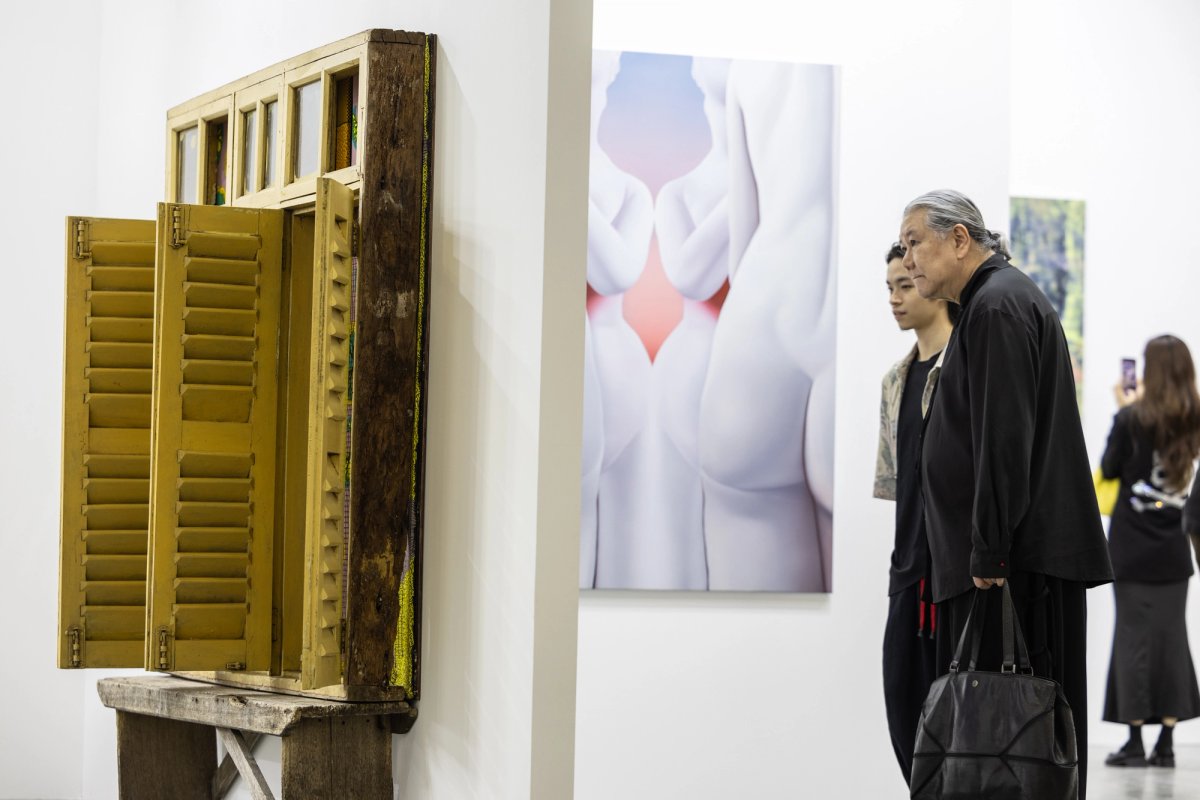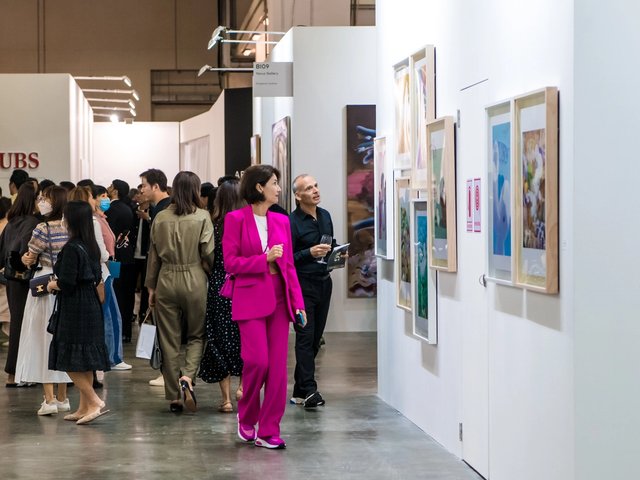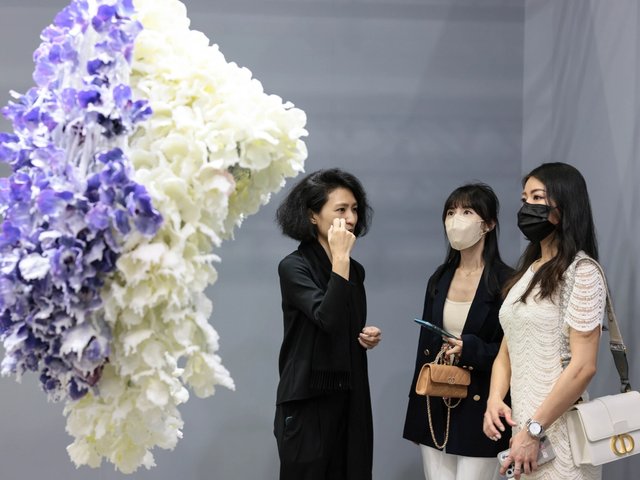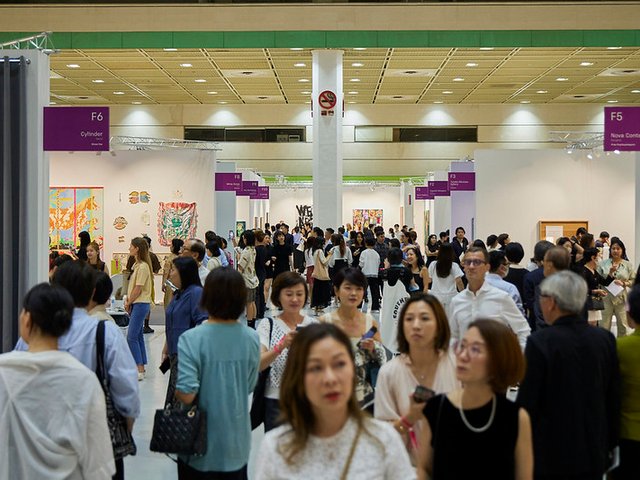"Welcome to the tropical jungle," reads a sign welcoming visitors to the impressive green wall at Terminal 3 of Singapore Changi Airport. The irony is, of course, that despite its geographical setting, the Lion City is anything but a jungle. Everything it does is planned and in an orderly manner.
This includes a decades-long effort by its government to position the city-state as an art hub for the diverse and organic Southeast Asian art scenes. After some turbulence, the flagship international fair Art SG was launched last year and well received by an art-starved, post-pandemic public, gathering 164 galleries from 35 countries.
However, sales at the fair's inaugural were reportedly subpar, due in part to the absence of mainland Chinese collectors because of Covid-19 restrictions. In this regard, Art SG's sophomore edition, which opened to VIPs yesterday (18 Jan) and runs until 21 Jan, will be crucial to determine if the fair is here to stay.
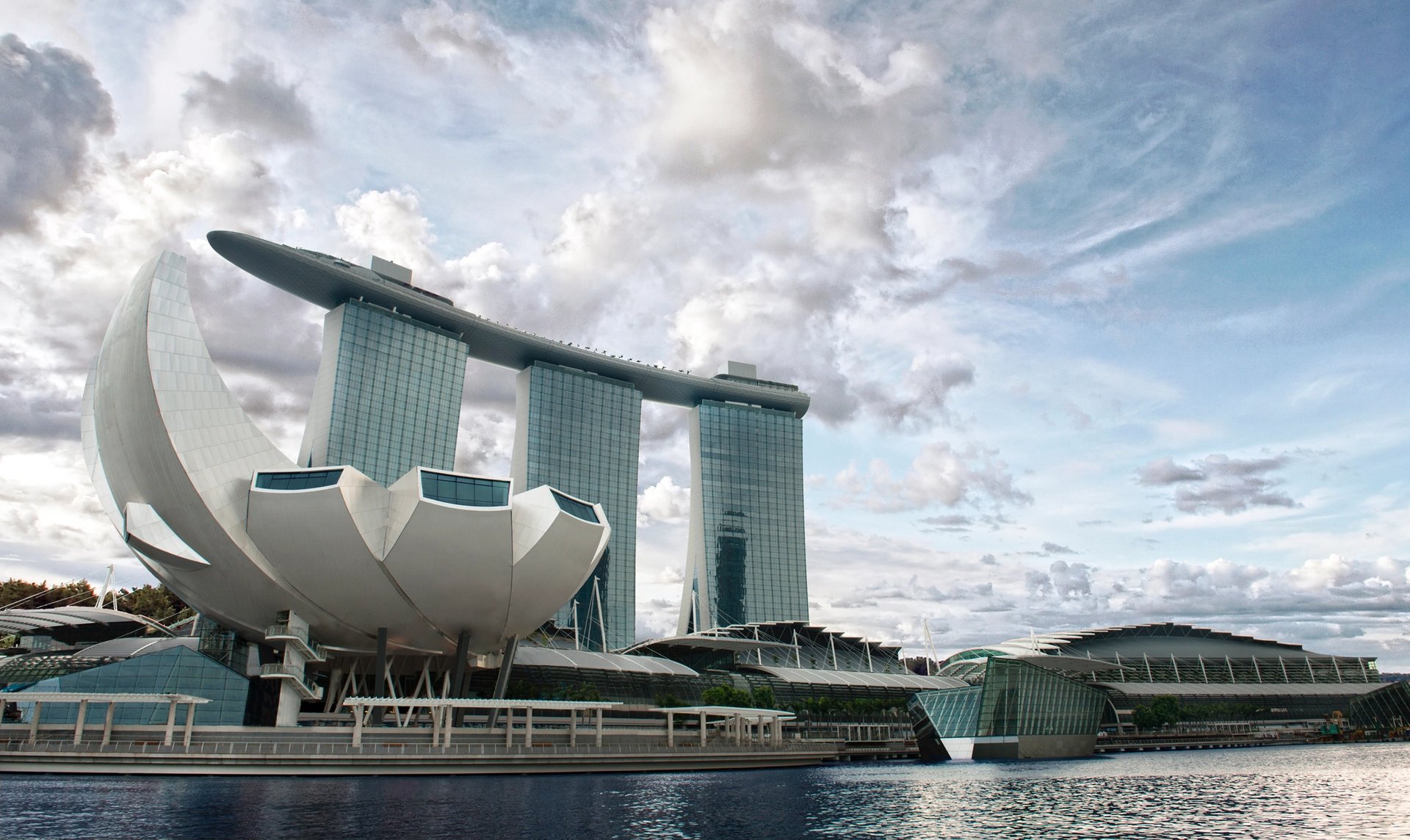
The fair takes place at the Marina Bay Sands Expo & Convention Centre
Courtesy of Marina Bay Sands/ArtSG
While the gallery participation dropped by 29% this year, this is not felt when walking around the stands. Works of art now have more breathing space, with galleries still spread over the two dedicated floors of Marina Bay Sands Expo & Convention Centre. "On the top floor the cheap and cheerful. On the basement, the established and expensive," summarised one visitor.
"I feel this year is smaller but cosier," says the Singapore collector Huai Seng Chong. "And I see quite a lot of people from overseas."
Geopolitics is indeed responsible for sales too. Walking around the aisles in extravagant outfits are several Hong Kong collectors who recently moved to Singapore, Russian expats more than willing to invest in art, and a growing number of wealthy Indian nationals living in Singapore, setting up family offices and showcasing their collections in open houses during art week.
The collector and dealer Aan Andonowati, based in Bandung, Indonesia, participated with her gallery at Art SG last year, but decided to skip this year: "There are too many fairs in Asia close to each other." She picked the "more supportive" Art Jakarta over the internationally focused Art SG 2024 because her collector base is mostly Indonesian. "But I don’t exclude the possibility of being in Singapore next year," she says. "I have a good feeling from this second edition.|
There are some newcomers too. Paris-based A2Z gallery has high hopes for its first participation in Art SG, bringing artists with socio-political themes, including the Vietnamese Trang Trong Vu and the Burmese Aung Ko: “We felt the need to have a presence back in Asia, after closing our second space in Hong Kong during the pandemic,” says the gallery's director Anthony Phuong.
While painting still dominates the booths, due to broadly conservative tastes of the region's collector base, as well as wider market trends, galleries, like Chi-Wen from Taiwan, present video work, including a film by the artist Su Huy-Yu, also shown in Art SG's screening program.
“Part of the programme caters to younger regional collectors, who are educated overseas and less tied to the concept of nationhood, compared to the older Southeast Asian collectors,” explains Art SG's director, Shuyin Yang. “They are more experimental and taste-based in their choices.”
In terms of sales, the first day of the fair proved quite successful. The star galleries on the first floor, like Lehmann Maupin, immediately made big sales, including a painting by David Salle, and two pieces by Lee Bul, which were sold in the range of $200,000 to $300,000.
Wendy Xu, the general manager of Asia for White Cube, reports sales of two works by Antony Gormley, each for £500,000, and a painting by Anselm Kiefer for €1.1m
“Art SG is still a young fair, but I see it growing,” says Dawn Zhu, Thaddaeus Ropac’s Asia director. "There’s also notably more energy and pace than last year, with clear intent to buy and sales happening more swiftly." Their sales on the first day include a work by Alex Katz, priced at $110.000, and a Jules de Balincourt painting, titled Darwin's Nightmare, which sold for $125,000.
Some smaller galleries reported sold out stands at the preview. Carl Kostyal, which has locations in London and Stocklom, placed every single painting, each for $18,000, from an eerie series by the emerging Indonesian artist Atreyu Moniaga.
Major Singapore-based regional players, also made sales at the VIP preview. Gajah Gallery sold works by the late Balinese feminist artist Munisiash, Yunizar from Indonesia, and the Filipino artist Chavez, with prices that range from five to six figures.
The stand of Sundaram Tagore, which has locations in Singapore as well as New York and London, was elegant and impressive. It showed a big dripping painting by Hiroshi Senju in pastel colours, which sold for $410,000, alongside two other works by the artist for $320,000 and $240,000.
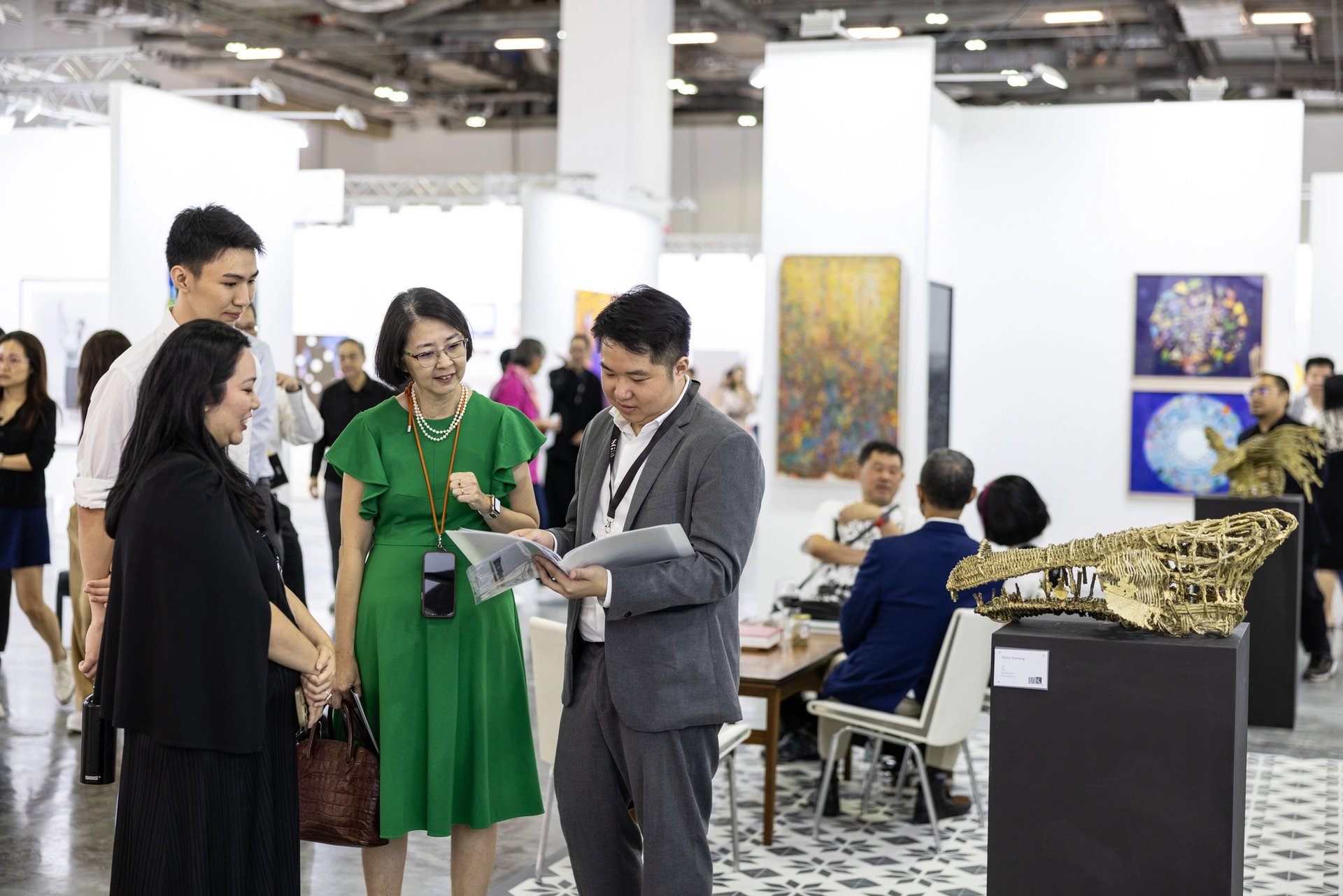
Richard Koh Fine Art's stand at Art SG
Courtesy of Art SG
Richard Koh Fine Art’s booth was dominated by works by the Malaysian artist Justin Lim, the Singaporean Ruben Pang, and the established Thai painter Natee Utarit. These were sold to Asian collectors for between $20,000 to $180,000.
“The fair is meant to valorise the Singaporean context where the art world is uniquely accessible, bridging Southeast Asia to the global art world," fair director Yang says She brushes off usual comparisons with Hong Kong: “I feel Singapore is ultimately doing its own thing.”
The Hong Kong collector Patrick Sun finds this edition of Art SG to be "electrifying" with great work not only at the fair, but also in shows around the city, connected to the fair programming: "We will always have fairs in Hong Kong, in Taiwan, and Singapore, and they will all be complementary," he concludes. "I don't even see the need to compare. The market is big enough."


